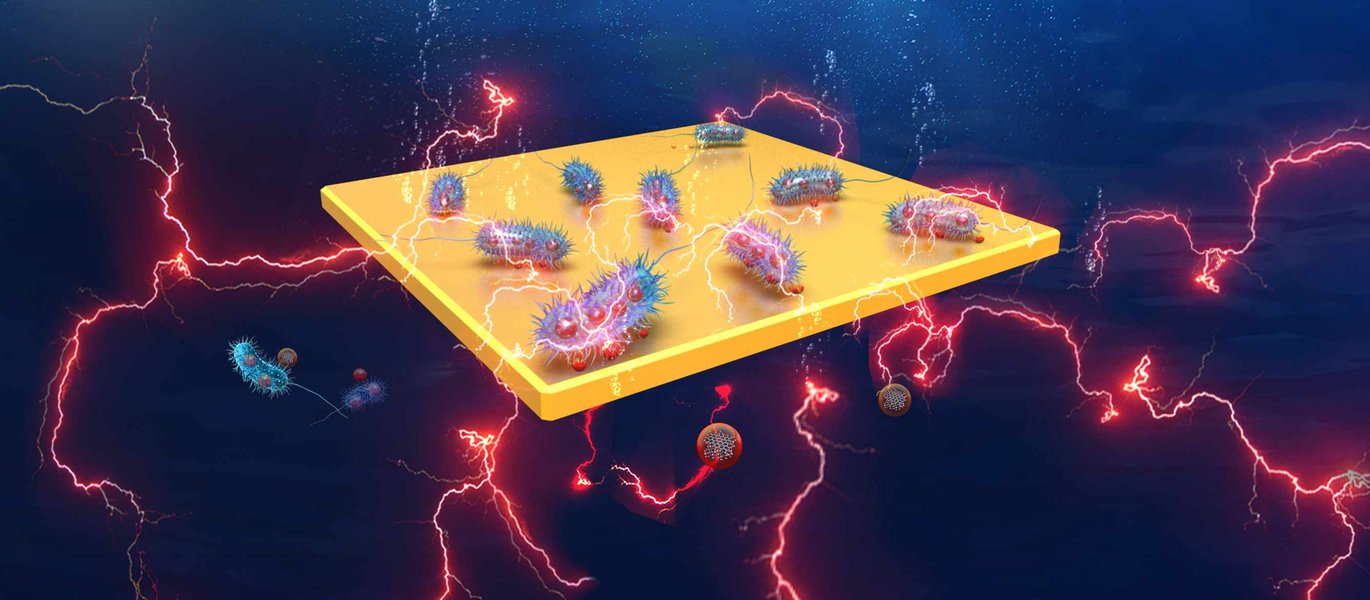Enhanced microbes as alternative green energy sources
The demand for energy is growing and so is the demand for alternative energy solutions, which includes living sources of electricity. AU researchers have in collaboration with an international team created microbial energy cells and shows a method for improving the efficiency of bioelectrical systems.

The biggest challenges facing humanity have always been about energy and related issues. Although there is increasing support towards going green, and pledges from many countries to leave coal and oil behind, shifting the source of power will only address the problems caused by dirty energy production. However, the demand for energy is still ever-growing so much so that one of the modern measures for the quality of life is average energy consumption per capita. In other terms, we do and will need more and more power to be happy and healthy. This brings us to formulating alternative energy solutions.
Joining forces in investigating bioelectrical systems
Renewable energy sources, i.e. solar, water, wind, geothermal and biofuel, are effectively limitless and guilt-free but rely heavily on geographic conditions. There is one more option that has all the benefits of renewables and can overcome the location obstacle yet remains under the radar - the living sources of electricity. No, we are not talking about putting an eel tank in each home, our idea is less… fishy. An international multidisciplinary group of researchers from China, Denmark, and Turkey came together to further the understanding of microbial bioelectricity production and develop a method to significantly increase their power output.
Carbon dots as enhancers
The research team behind the study successfully created microbial energy cells of Shewanella oneidensis MR-1 with significantly improved output and throughput using carbon dots (CDs) (nanoparticles). S. oneidensis MR-1 is a type of bacteria that generates electricity, applied in bacterial fuel cells, environmental pollution treatment, reduction of metal nanoparticles, and biosynthesis.
The research group hypothesized that, compared to genetic engineering, introducing a highly-conductive, biocompatible matter in a tiny dimension with certain surface functional groups to a cell, could be more convenient and practical to upgrade its charge transport capability without damaging the organism. Thus, they fed S. oneidensis MR-1 microbes with CDs which incorporated with the multiplying cells at an extra- and intra-cellular level. The prepared microbial fuel cells showed that using CDs can increase the maximum current value and power output by ~ 7.34 and 6.46 folds. They then ran various in-depth investigations to display the influence of CDs in enhancing bioelectricity generation. They demonstrated that CDs increased the overall electronegativity of the microbes and improved their cellular adhesion, which in turn increased the biomass on the anode of the microbial energy cell hence facilitated better electron transfer.
The research team found out that CD’s highly conductive carbon core not only improved overall systemic electrical conductivity but can also increase the packing density of the electron transfer path. The experiments with mutant cells lacking electron transfer chain components showed that CDs could restore the path by insertion. Importantly, the CDs’ incorporation accelerated cells’ metabolic rate and flavin production, which in turn raised electron generation and transport rate.
The results can contribute to next-generation energy systems and related fields. Who knows -maybe our future smart homes will use all their waste to culture bacteria that provide the energy they need. Wouldn’t it be fascinating?
More information
The work by AU researchers was financially supported by SinoDanish Center for Education and Research (SDC) and the European Commission (MSCA-RISE).
The research was carried out by researchers from Interdisciplinary Nanoscience Center (iNANO) and Department of Chemistry, and Department of Bioscience at Aarhus University (AU), in collaboration with researchers from Harbin Institute of Technology (China), Sino-Danish Centre for Research and Education (SDC) (DK), National Institute of Biomedical Imaging and Bioengineering (NIBIB) (USA), National Institutes of Health (NIH) (USA), and Chinese Academy of Sciences (China).
Read more about the results in Nature Communications (Open Access):
Contact
Assistant Professor Hüsnü Aslan
Interdisciplinary Nanoscience Center
Department of Bioscience
Aarhus University
Email: aslan@inano.au.dk
